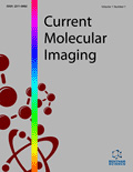Abstract
This review describes recent research efforts focused on increasing the specificity of contrast agents for proton magnetic resonance imaging (MRI). Contrast agents play an indispensable role in MRI by enhancing the inherent contrast of images; however, the non-specific nature of current clinical contrast agents limits their usefulness. This limitation can be addressed by conjugating contrast agents or contrast-agent-loaded carriers—including polymers, nanoparticles, dendrimers, and liposomes—to molecules that bind to biological sites of interest. An alternative approach to conjugation is synthetically mimicking biological structures with metal complexes that are also contrast agents. In this review, we describe the advantages and limitations of these two targeting strategies with respect to translation from in vitro to in vivo imaging while focusing on advances from the last ten years.
Keywords: Contrast agents, gadolinium, magnetic resonance imaging, relaxivity, superparamagnetic iron oxide particles, target specificity.
 31
31

